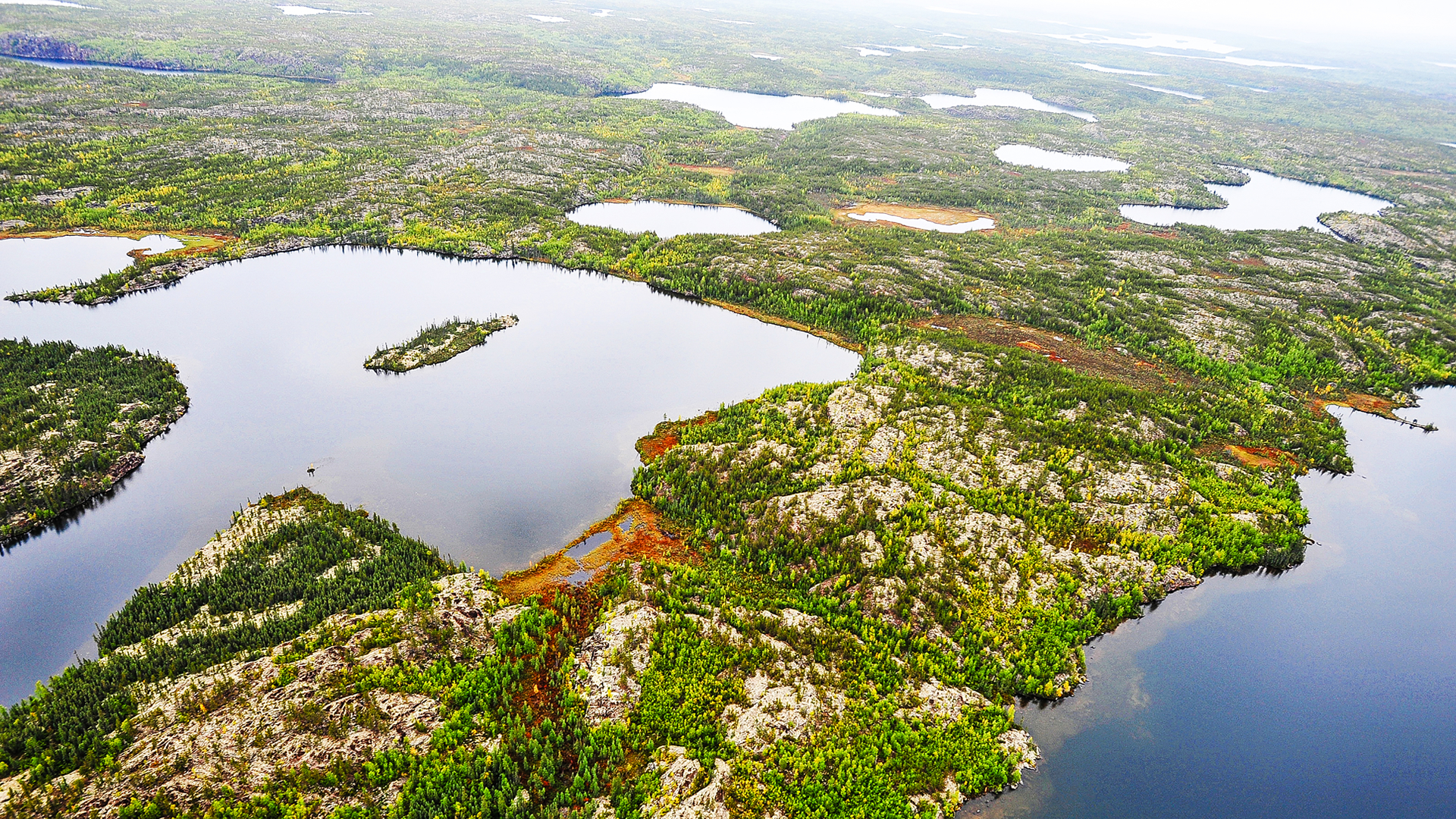Survivalists competing in Season 7 of “Alone” endured the harsh conditions and aggressive predators of the remote Arctic region of Canada known as the Northwest Territories. The intense competition centers on the shores of the Great Slave Lake, traditional home to the Lutsel Kʼe Dene First Nation community, based on the lake’s eastern arm. The Lutsel K’e, whose ancestors have lived in the area for centuries, have welcomed the “Alone” team to their region, sharing guidance on what this demanding landscape has to offer—and how to conduct themselves in a respectful way in their ancestral lands.
Here are some illuminating facts about the territory and the Lutsel K’e people:
Great Slave Lake: Deepest lake in North America (2,010 ft.), seventh largest by surface area. It’s some of the cleanest water in the world.
Terrain: The granite shoreline consists of rocky forest and includes some of the oldest rocks in the world, formed up to 2.7 billion years ago.
Temperature range: -40 to 60 degrees F
Travel: Traditionally, ice on Slave Lake and the nearby rivers was thick enough eight or nine months out of the year that the Dene people traveled mostly by dogsled. Dogs were arrayed in single file, to help warn travelers of thin ice. Now, the Lutsel Kʼe also travel by snowmobile.
Traditional language: Dene Yati
WATCH: every episode of Alone from the beginning.
Ancestral homes: Log houses and caribou skin tents
Food to be foraged: The land provides edible plants, labrador tea, wild onions and a wide array of berries: strawberries, blackberries, raspberries, blueberries, cranberries and gooseberries.
Mammals to trap: Otters, lynx, squirrel, marten, wolverine, fox.
Mammals to hunt: Caribou, grizzly bear, black bear and moose. Muskoxen are newer to the area, having migrated south from the Barren Lands in recent years in search of more food.
Waterfowl to hunt: Blue-winged teal, goldeneye, tern, Northern pintail, Canada goose, long-tailed duck, tundra swan.
Fish to be caught: Jackfish, lake trout and whitefish, Northern pike.
The important annual gathering: Every year in early August, the Lutsel K’e convene for what’s called the Spiritual Gathering at the long sand beach near the mouth of the river, called Desnethche. The event lets families and friends reconnect with the land and celebrate traditions.
Key myth: For centuries, the Lutsel K’e Dene have found spiritual resonance in a majestic waterfall upriver of their traditional settlement of Kaché called Ts’ankui Thedá, a.k.a. the “Old Lady of the Falls.” Legends tell of an old Dene woman who sat in the waterfall, promising to help those in need—who are hungry or sick—as long as she would be respected and protected for all time.
Watch: The Importance of Land to the Arctic’s Lutsel K'e Dene Tribe
The all-important caribou: Caribou, or reindeer, have always been key not only to the Lutsel K’e Dene’s survival, but also foundational to their culture and identity. They share their territory with the caribou, which feed on lichens on the boundary between the boreal forest and the barren land. In spring, the caribou migrate across the region’s still-frozen lakes to their calving grounds in the tundra. In fall, they return in herds numbering up to tens of thousands. Lutsel K’e ancestors lived nomadically, with entire families moving from camp to camp, following the caribou’s annual migration. The caribou didn’t just provide food; almost every part of the animal was used. (See list below.) This intimate relationship with the animal has fostered a profound relationship: The Lutsel K’e have taught their children legends of the caribou—and how to respect this important animal.
- HIDE: Clothing, moccasins, tents, teepees, sleds, thongs for snowshoes, drums, dog harnesses
- SINEW: Snowshoes, thread for sewing
- BONES: Scraping tools, needles, knives, hunting equipment, sticks for hand games
- INNARDS: Brain or marrow used for tanning hides
- FAT: Candles
SOURCE: Maps and materials distributed by the Lutsel K’e Dene
HISTORY Vault
Stream Age of Discovery documentaries and your favorite HISTORY series, commercial free. Start your free trial now.

